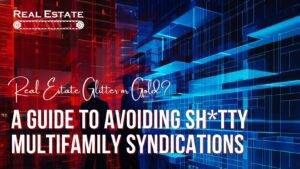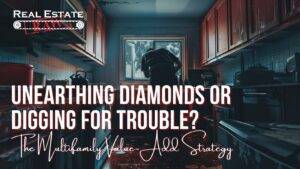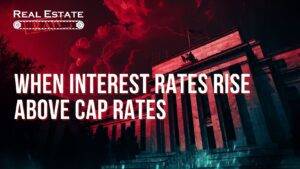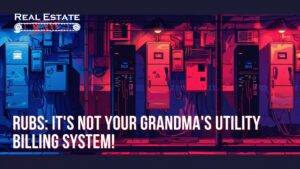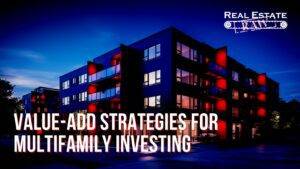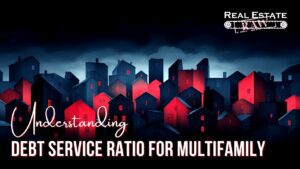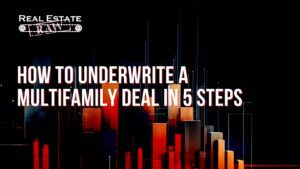The following is adapted from Creative Cash by Bill Ham (author), Gino Barbaro (contributor), Jake Stenziano (contributor).
If you’ve been in real estate for decades or are just starting out, there’s one truth I’m sure you know well: it’s hard to find good deals. When you’re using creative and seller financing (CSF) to close deals, there’s another wrinkle you have to consider in your hunt for good deals: the condition of the properties. Most likely, you’ll be dealing with a distressed asset.
Because if a property is up and running and making tons of money, why would sellers finance it to you? They probably wouldn’t. They would just sell it on the open market to a qualified buyer.
This means you need to find deals where you can create value for the owners and for the property. You do this by solving problems. So, you actually want to look for distressed assets so you can swoop in and offer serious value by solving whatever problems they have.
If you’re still not convinced, let me show you what these assets might be and how it can work for you. As I’ll show you, I know firsthand how lucrative distressed properties can be.
What is a Distressed Asset?
The term “distressed asset” can refer to many things including:
- Deferred maintenance
- Low occupancy
- Bad management
- Units that need to be rehabbed (multifamily)
- Bad tenant base (large number of non paying tenants)
- Exterior building damage
These are common areas of distress I’ve encountered while building my portfolio. It’s worth mentioning that in all the real estate I’ve dealt with, I’ve never done a deal that didn’t have some level of distress or upside (the ability to raise its value through renovations) to it.
When you can get a property at the right price with the right debt, renovating real estate can be extremely lucrative. As you’ll see below, I’m speaking from experience.
A Distressed Asset Increased My Net Worth by $500,000
In January of 2010, I bought a 27-unit apartment complex for $240,000 (all with private money). Four units were occupied and the property needed about $300,000 for total rehab costs. The day after I completed the repairs, the property was appraised for $500,000 more than I had invested in the project. I had used some creative ways to get the renovations done, too.
My net worth increased by $500,000 because I did this project with someone else’s money. Then I refinanced at a bank and returned money to my financial backers plus interest.
I’m telling you this because I want you to realize the power of dealing with a distressed asset while leveraging creative financing. You can create tremendous wealth through “rehab” projects. Doing these projects with other people’s money also helps to mitigate the risk.
Here’s an important note to keep in mind: attitude is everything. You must remember, the seller allowed their property to become distressed, not you. You bring a solution to the problem. They should be willing to bring the property to the table if you are willing to do the work.
Think About This Before You Move Forward
If I’ve piqued your interest, consider this: you can renovate a property but not an entire neighborhood. When dealing with distressed assets, look for the worst building on the block. You can simply bring it up to the standard conditions of the area. On the other hand, if you have the nicest building on the block, it will usually decline to match the rest of the area.
Look for distressed buildings that need minor renovations, not ones that have large structural issues. Also keep in mind the more distressed an asset is, the larger the opportunity costs.
Consider also the opportunity cost of each project as you’re considering distressed assets. You can do only so many deals at once. You can manage only so much business or work at one time. If you plan to do a large renovation, consider the opportunity cost. How long will you be tied up with this project? How much money will be tied up and for how long?
If you do a large renovation project, make sure it’s a good one because it will likely cause you to pass on other smaller deals that may come along. That’s how opportunity cost works.
The Potential of Distressed Assets
I’m not trying to say that every distressed asset you find is a diamond in the rough. Some of them are money pits that should send you running in the opposite direction.
But some of them present a serious opportunity to make money using someone else’s money. If you’re willing to solve problems and get creative with your financing, finding deals can become a lot easier. Why? Because distressed assets open up a whole new lane of value.
For more advice on distressed assets, you can find Creative Cash on Amazon.
What started out as a conversation at a live event one hot, sunny day in downtown Atlanta has blossomed into an amazing collaboration between Bill Ham, Jake Stenziano, and Gino Barbaro (Jake & Gino). Bill was instrumental in helping Jake & Gino launch their mentoring program and is one of the lead trainers in the company. With over twenty-five years of experience in operating vertically integrated real estate businesses, and over $100 million in assets under management, Bill, together with Jake & Gino, strive to teach others the strategies that have allowed them to become financially free.



